Italy’s tough town
Archaeologists reveal how a Roman ‘backwater’ bucked an Empire’s decline
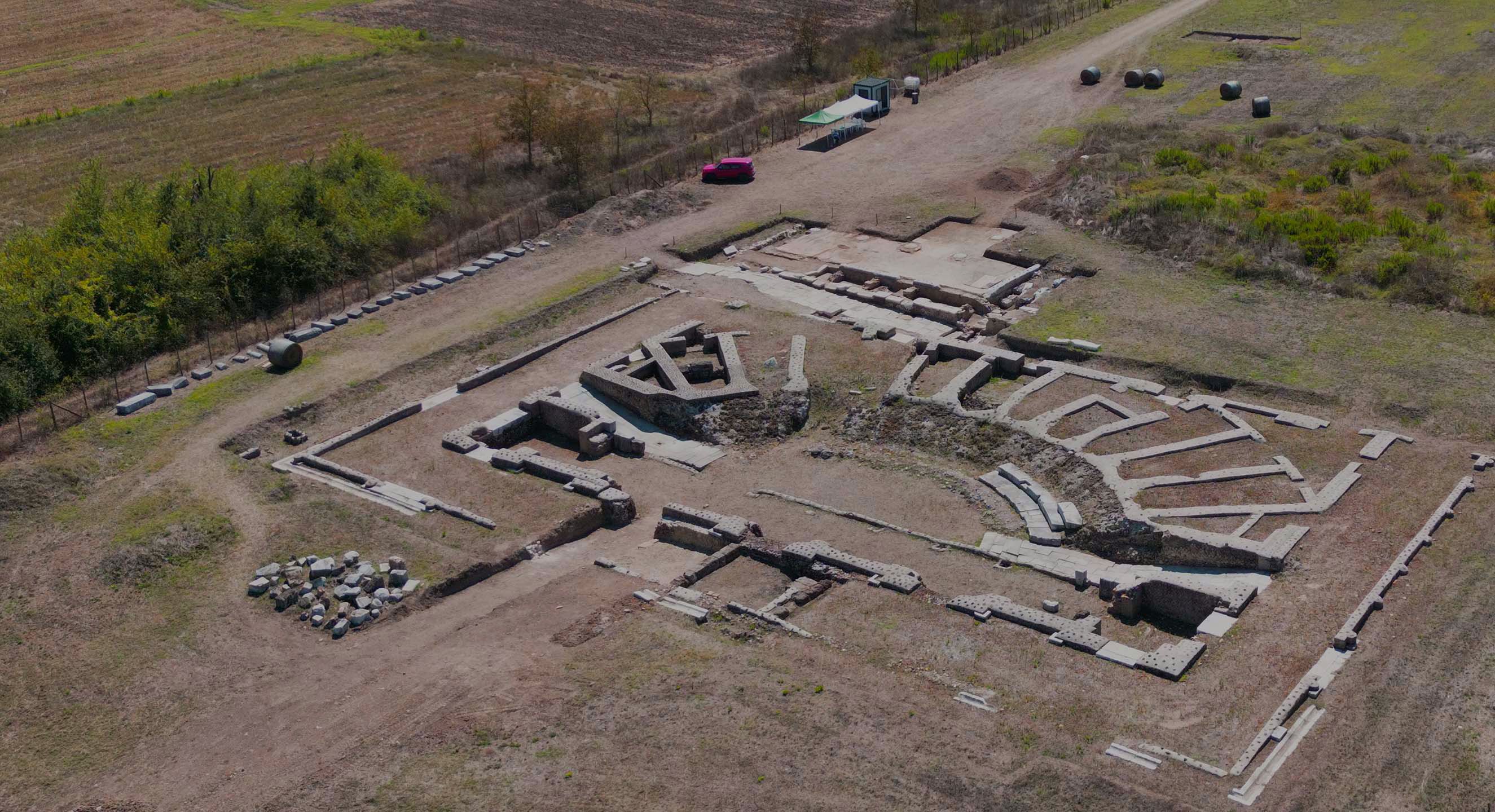
A rare roofed theatre, markets, warehouses, a river port and other startling discoveries made by a Cambridge-led team of archaeologists challenge major assumptions about the decline of Roman Italy.
New findings from Interamna Lirenas, traditionally written off as a failed backwater in Central Italy, change our understanding of Roman history, its excavators believe.
Their thirteen-year study – published in the edited volume Roman Urbanism in Italy – shows that the town in Southern Lazio continued to thrive well into the 3rd century AD, bucking what is normally considered Italy’s general state of decline in this period.
The team’s pottery analysis indicates that the town’s decline began around 300 years later than previously assumed, while a systematic geophysical survey has produced an astonishingly detailed image of the entire town’s layout, highlighting a wide range of impressive urban features.

Drone view of the excavation of two footpaths lining the street separating the basilica (top) from the theatre (bottom) at Interamna Lirenas.
Drone view of the excavation of two footpaths lining the street separating the basilica (top) from the theatre (bottom) at Interamna Lirenas.
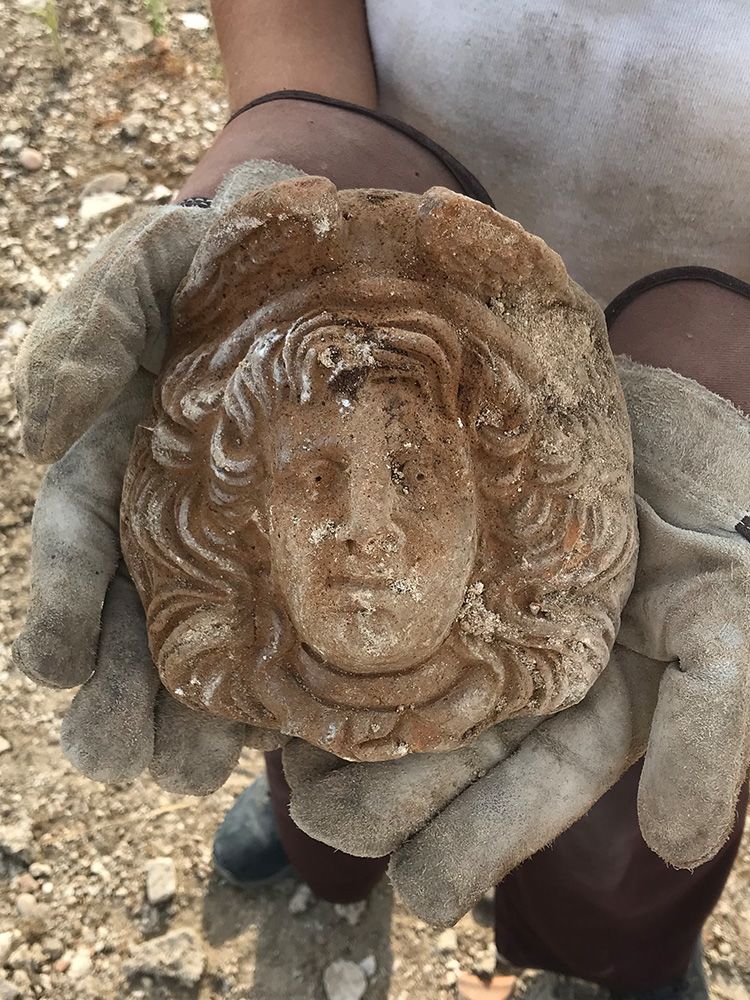
Gorgon antefix (likely 3rd to 2nd century BC), found in a dump of material within the theatre following its abandonment. The antefix probably belonged to an earlier nearby building.
Gorgon antefix (likely 3rd to 2nd century BC), found in a dump of material within the theatre following its abandonment. The antefix probably belonged to an earlier nearby building.
“Back in 2010, Professor Martin Millett and I started with a site so unpromising that no one had ever tried to excavate it. That’s very rare in Italy,” says Dr Alessandro Launaro, the study’s author and Interamna Lirenas Project lead at Cambridge’s Faculty of Classics.
“There was nothing on the surface, no visible evidence of buildings, just bits of broken pottery. But what we discovered wasn’t a backwater, far from it. We found a thriving town adapting to every challenge thrown at it for 900 years.”
“We’re not saying that this town was special, it’s far more exciting than that. We think many other average Roman towns in Italy were just as resilient. It’s just that archaeologists have only recently begun to apply the right techniques and approaches to see this.”
Because the site was mostly open fields, the archaeologists were able to conduct a magnetic and ground-penetrating radar (GPR) survey of around sixty acres, carried out by Dr Sophie Hay and Dr Lieven Verdonck respectively. They also launched a series of targeted excavations around the forum.

Dr Alessandro Launaro
Dr Alessandro Launaro
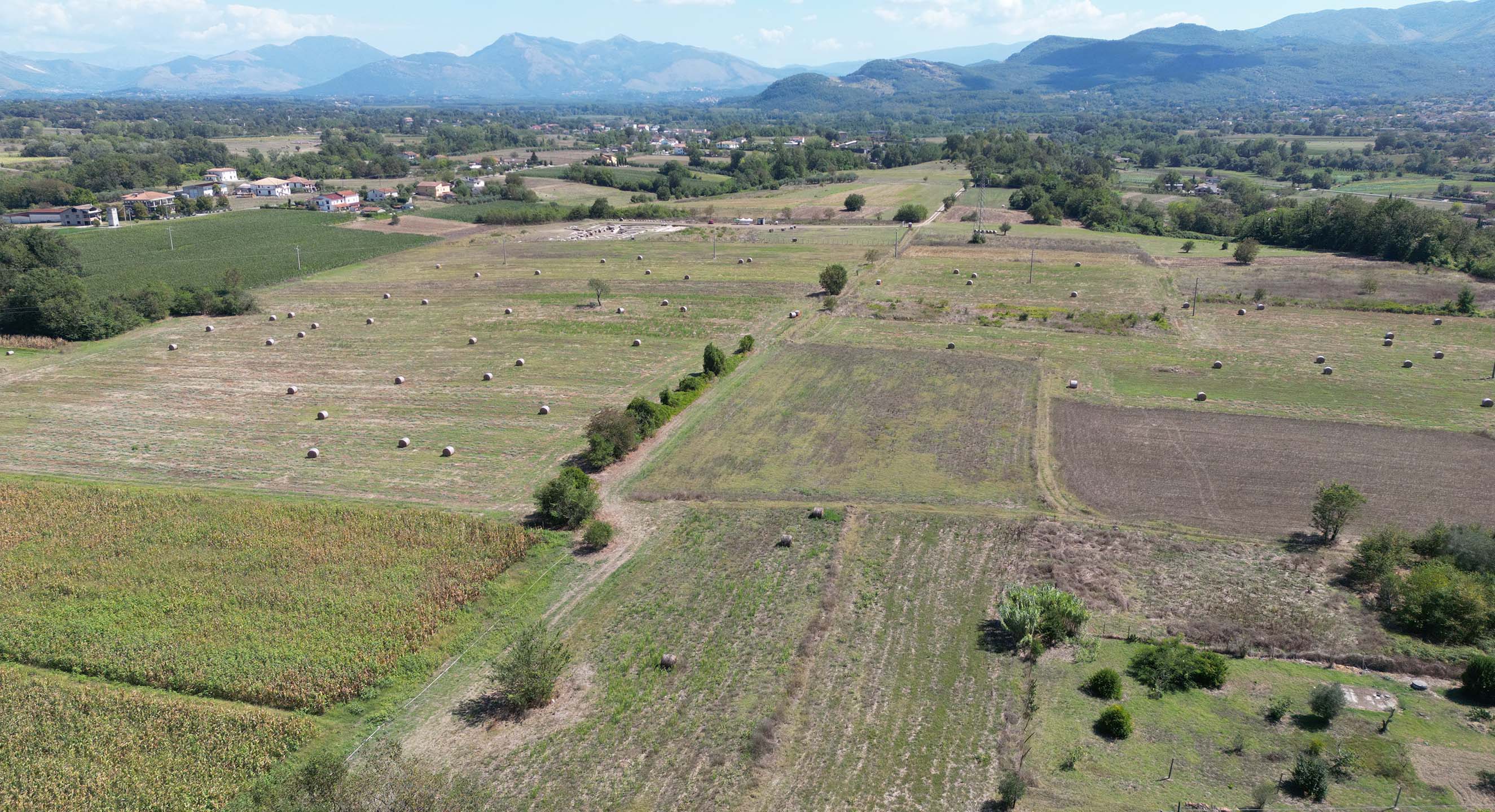
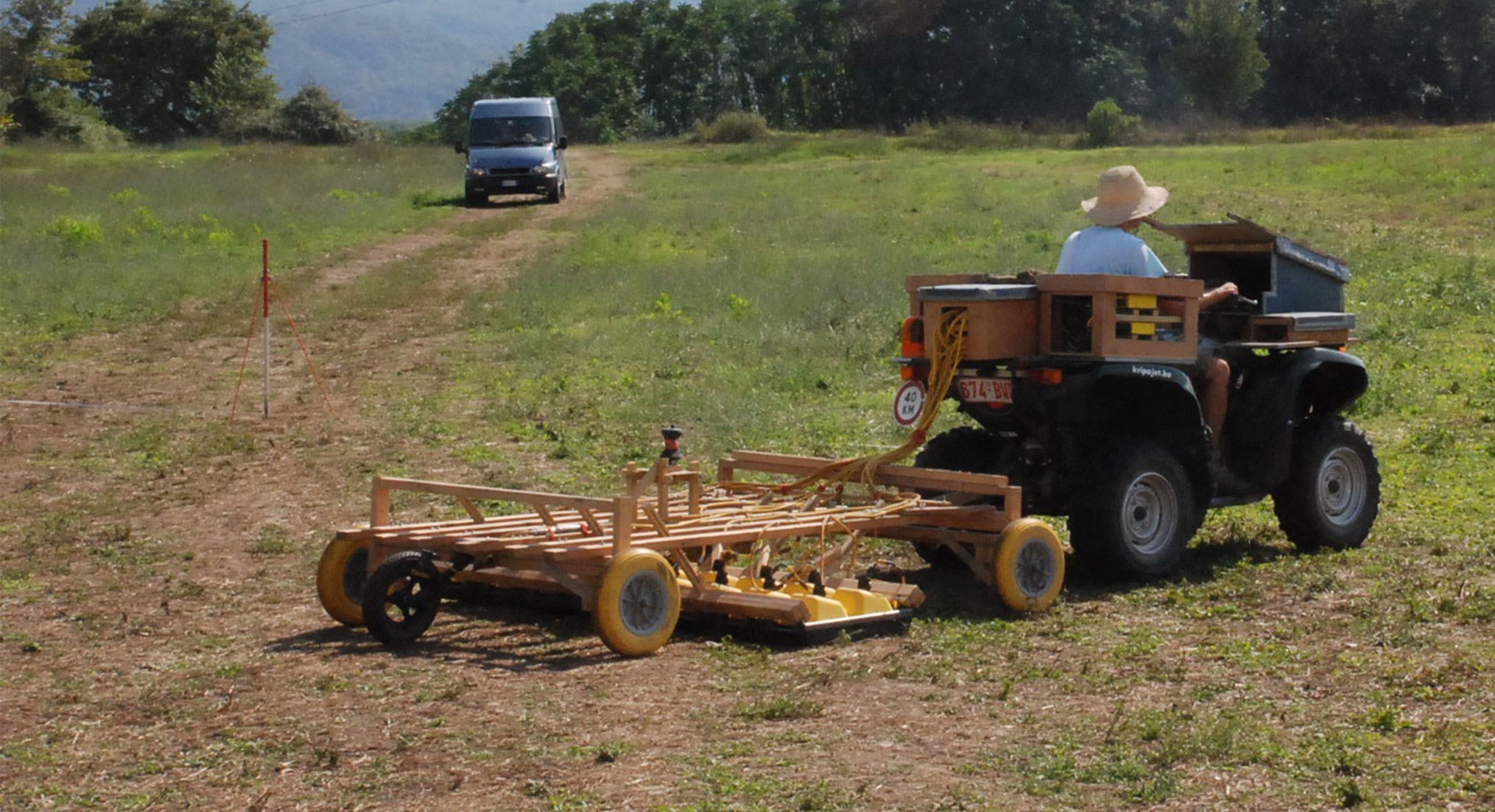
Pottery proves resilience
Until recently, archaeologists have tended to focus on evidence of higher status imported pottery rather than on the kind of plain commonware pottery used for cooking. The study of commonware has advanced over the last 20 years but Launaro’s team made it specifically central to their investigation.
Forty years ago, Canadian archaeologists studied the distribution of fineware and amphorae potsherds in the ploughsoil above Intermna Lirenas and concluded that the town’s occupation peaked in the late 2nd to early 1st centuries BC (at around 74 acres), before shrinking to around 25 acres by the 1st century AD.
But thanks to meticulous work by finds supervisor, Ninetta Leone, the team was able to map the town’s development using a far larger and more reliable body of evidence, tens of thousands of pieces of commonware pottery.
This showed that the town actually resisted decline until the later part of the 3rd century AD, around 300 years later than previously assumed. At its peak, the town would have housed around 2000 people.
“Based on the relative lack of imported pottery, archaeologists have assumed that Interamna Lirenas was a declining backwater,” Launaro says. “We now know that wasn’t the case.”
Below: Changes in the occupation of Interamna Lirenas from 300 BC to 550 AD as indicated by the ploughsoil assemblage:
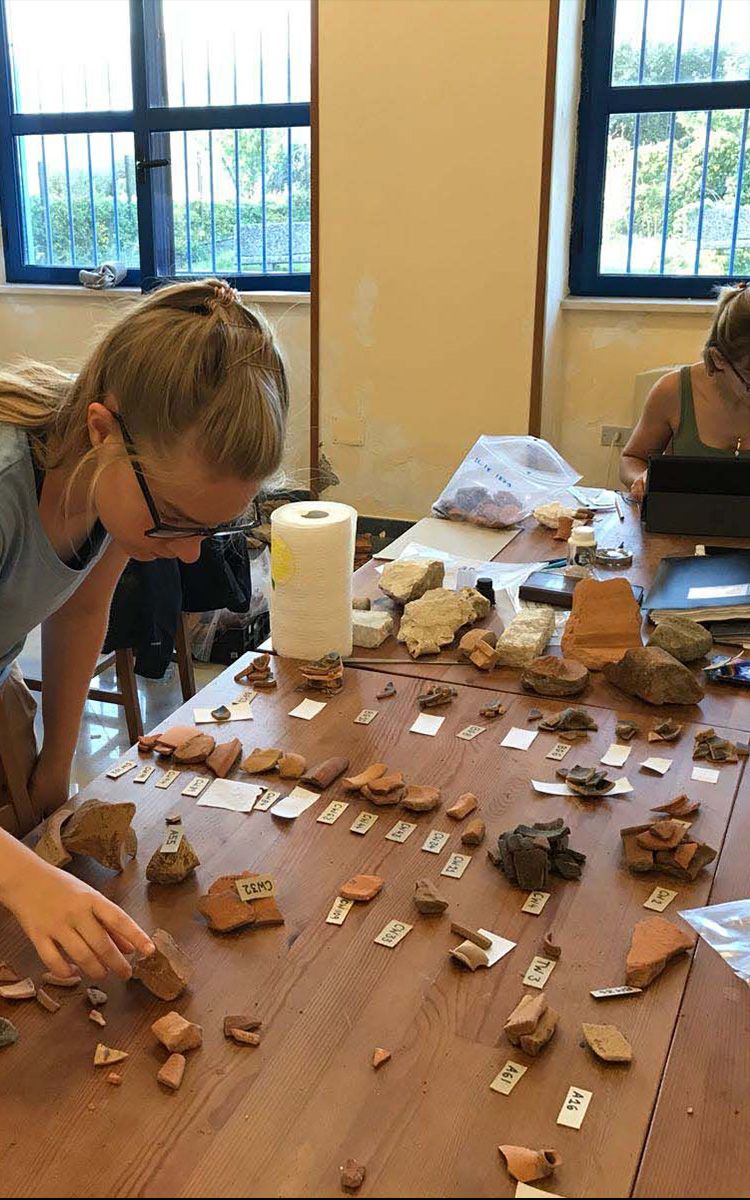
Archaeologists processing Interamna Lirenas finds
Archaeologists processing Interamna Lirenas finds
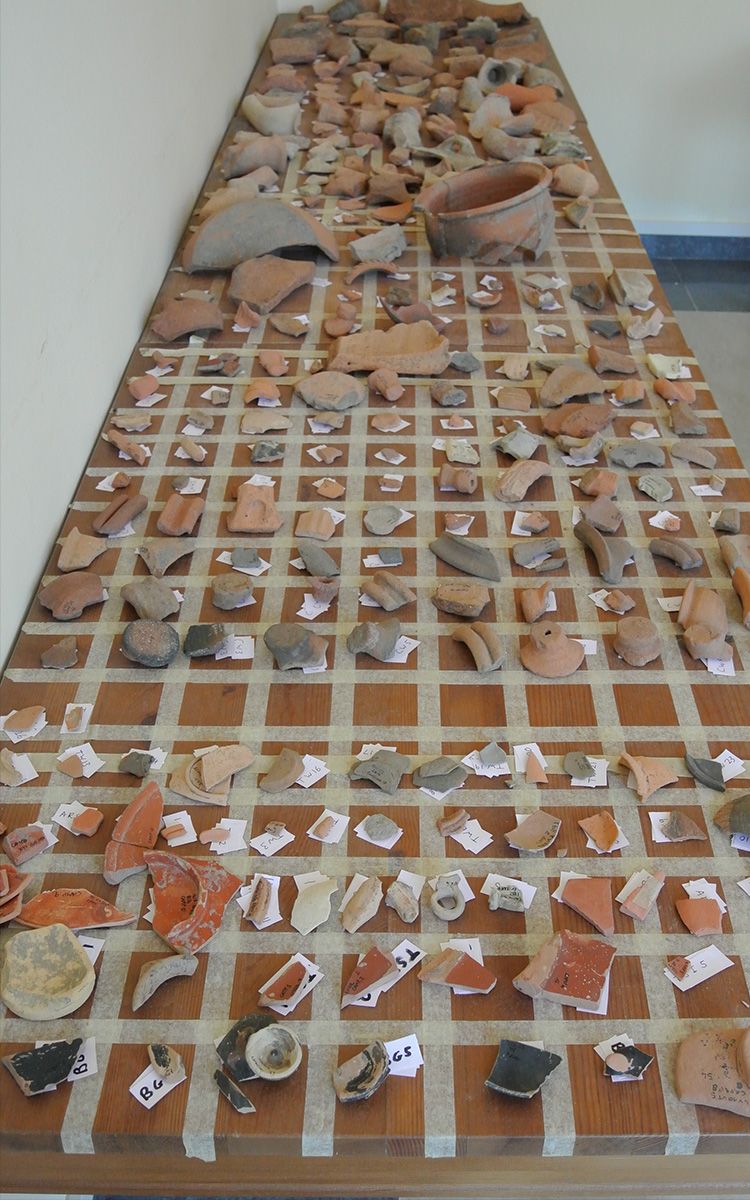
A sample of commonware pottery finds from Interamna Lirenas
A sample of commonware pottery finds from Interamna Lirenas
350 BC to 200 BC
200 BC to 50 BC
50 BC to 100 AD
100 AD to 250 AD
250 AD to 400 AD
400 AD to 550 AD
Julius Caesar
The team’s re-appraisal of an inscription found in the nineteenth century (now lost) confirms that Interamna Lirenas gained the patronage of Julius Caesar in 46 BC but, Dr Launaro argues, this did not make it exceptional or explain the town’s long-term success. Rather the archaeologists’ findings help to explain why the town would have appealed to Caesar.
Launaro, a Fellow of Gonville & Caius College, says: “Interamna Lirenas was strategically located between a river and a major road, and it was a thriving node in the regional urban network. It would have been valuable to Julius Caesar as he sought to consolidate support across Italy during the civil wars.”
“This town continually played its cards right, it was always forging relations with communities between Rome and southern Italy while thriving as a trading hub.”
While we currently only know of three other towns to share this privilege, almost certainly there were more.

The Tusculum portrait, a contemporary Roman sculpture of Julius Caesar (50–40 BC). Archaeological Museum of Turin.
The Tusculum portrait, a contemporary Roman sculpture of Julius Caesar (50–40 BC). Archaeological Museum of Turin.
River port
The team’s GPR survey near the River Liri, also carried out by Dr Verdonck, revealed the presence of a large (40m x 12m) warehouse, a temple and a bath complex.
The researchers are confident that these structures all served a river port between the late 1st century BC and the 4th century AD.
“River ports didn’t just need warehouses,” Launaro says. “People spent a lot of time working and resting in the vicinity so they needed all kinds of amenities, just like the ones we found here.”
The River Liri was undoubtedly navigable because the Emperor Claudius planned to make it even more so by diverting the waters of a lake into it.
Launaro says: “This river port enabled Interamna Lirenas to profit from trade between Aquinum and Casinum, key centres to the north, and Minturnae and the Tyrrhenian coast to the southeast. It would have been crucial to the town’s success.”
The now wooded area under which the piers of the river port might still survive is not currently accessible so cannot be excavated for now.
Theatre
The archaeologists discovered that the sector immediately to the north of the town’s forum underwent significant re-development in the late 1st century BC.
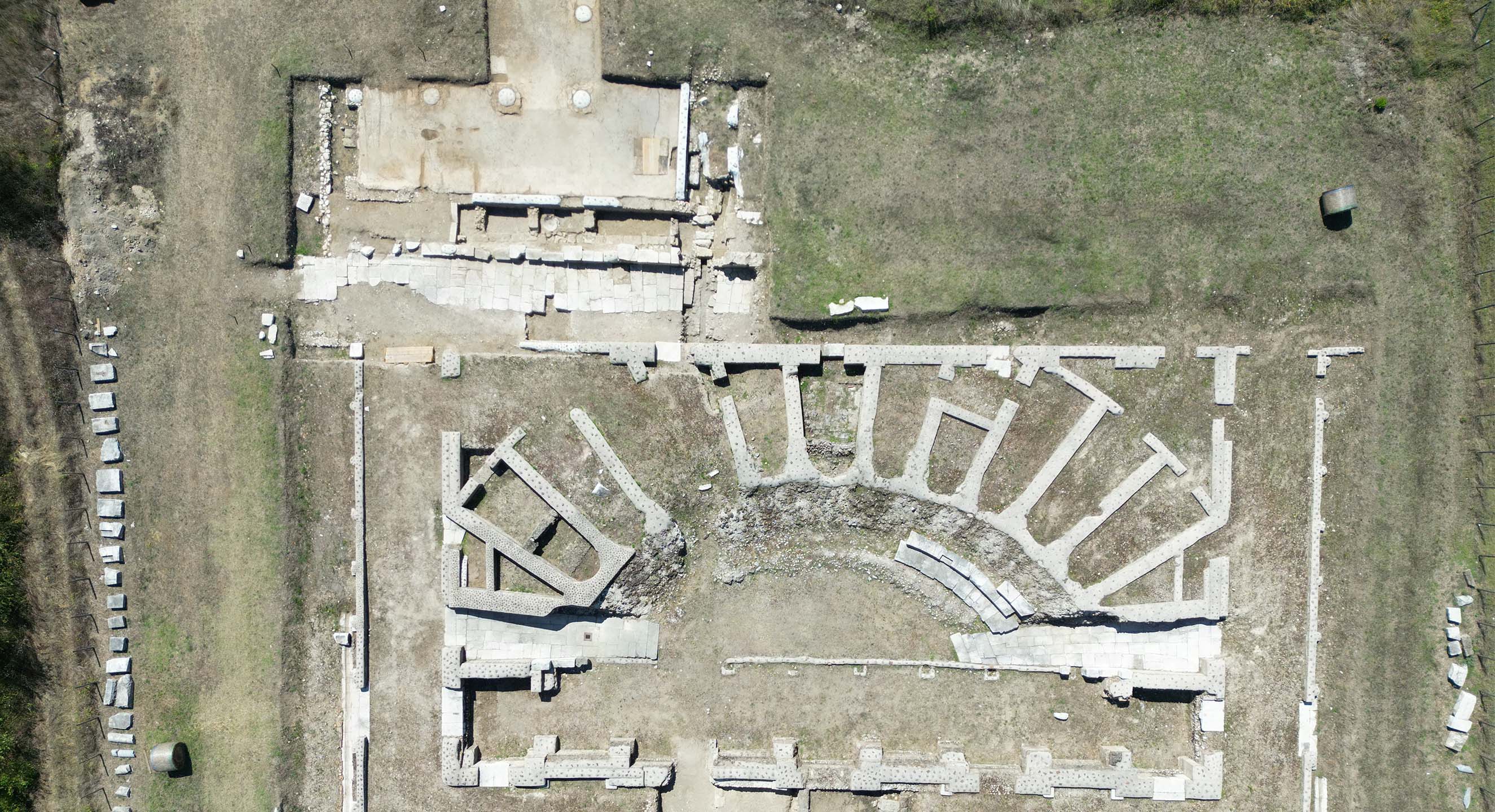
Along the northwestern side of the town, the archaeologists discovered the remains of a roofed theatre which would have towered over an open terrace. The theatre (around 45 m x 26 m) would have been big enough to seat 1,500 people.
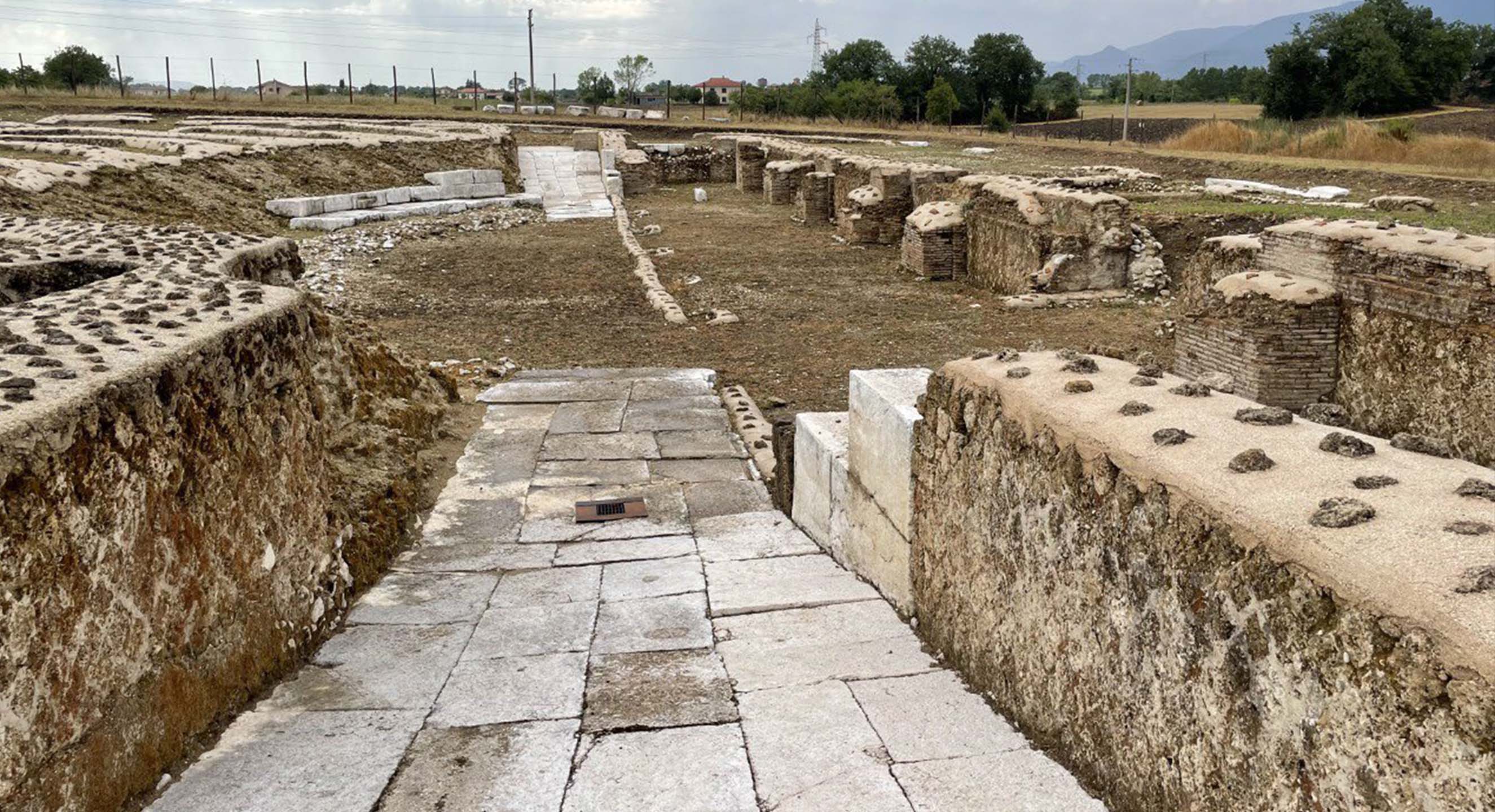
Access to the theatre from the south-east
Access to the theatre from the south-east
Roofed theatres are quite rare in Roman Italy and represent a significant upgrade on open-air structures, acoustically, architecturally and financially. The theatre boasted diverse marbles imported from across the central and eastern Mediterranean.
“The fact that this town went for a roofed theatre, such a refined building, does not fit with a backwater in decline. This theatre was a major status symbol. It displayed the town’s wealth, power and ambition.”
The archaeologists found evidence of the theatre undergoing improvements, including to the stage’s architectural background.
They also found an inscription (pictured below) bearing the name ‘Anoptes’, a wealthy freedman of the Sulpicii Galbae, a powerful family which likely had trade links to Interamna Lirenas. The theatre’s construction likely benefitted from Anoptes’ generosity.
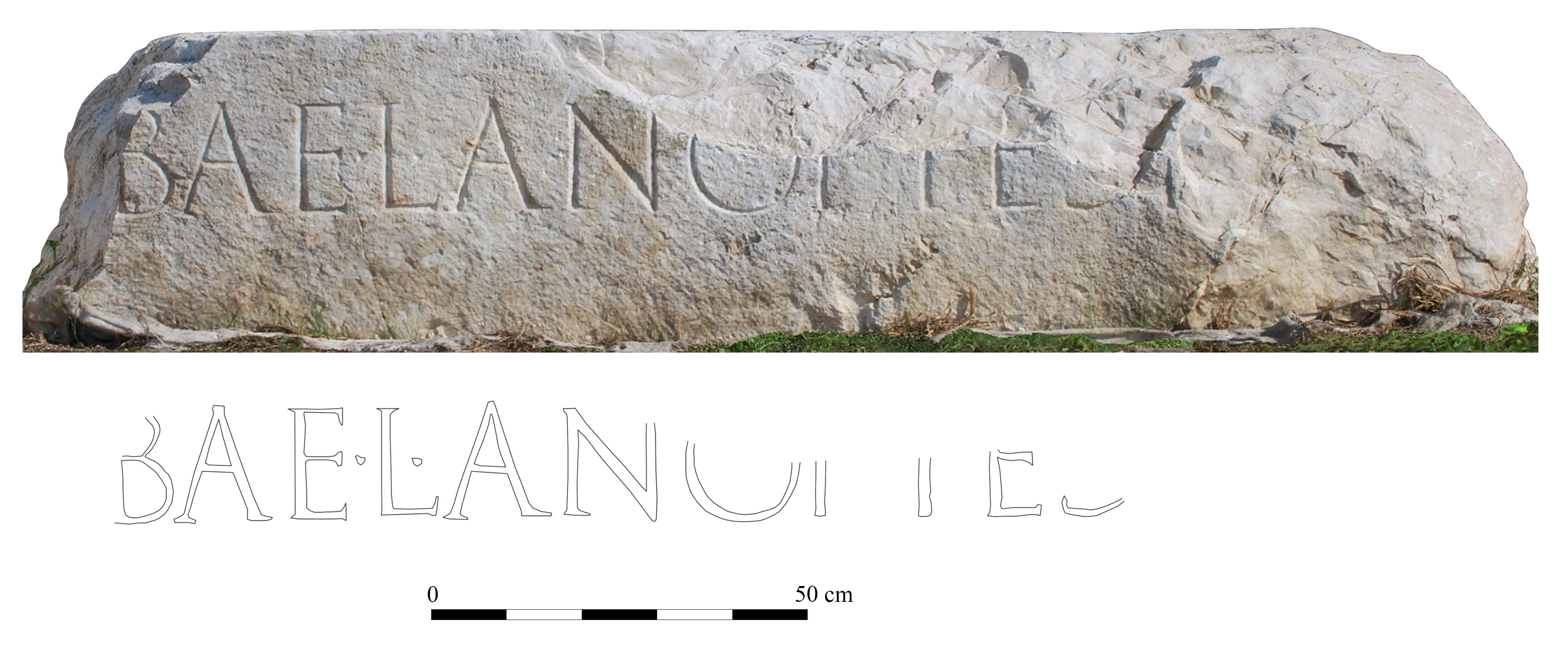
At a time when Roman Italy may have struggled, Interamna Lirenas’ theatre was still in operation. An inscription stating that M. Sentius Crispinus was honoured with a bisellium (a double-seat) at some point between the 3rd and 4th centuries AD has been linked with this theatre.
Launaro says: “The assumed lack of a theatre here was taken as evidence of the town’s early decline. At nearby Roman towns, archaeologists saw the remains of theatres sticking out of the ground. The remains of Interamna Lirenas’ amazing theatre was there all along, just completely buried.”
The theatre, seen from the East
A view into the theatre (without its roof) from above, and from the NE.
A view into the theatre (without its roof) from above, and from the SW.
A view inside the theatre, showing its seating sections, cavea, meaning "enclosure".
A view inside the theatre showing the scaena, the façade of the stage
Bath time
The town boasted an impressive three bath complexes.
The larger of these (c. 2,400 m2), located not far from the forum, featured a sizable swimming pool surrounded by a portico. An inscription tells us that the portico was a gift from M. Sentius Crispinus at some point in the 3rd–4th centuries AD.
Another inscription reveals that in AD 408 another member of the family, M. Sentius Redemptus, saved the same baths from ‘collapsing’ and kept them in operation with his benefactions.
This provides important evidence that even when Italy’s decline was in full swing, Interamna Lirenas ‘continued to exist as a civic centre of some relevance’.
Housing
One of the most striking aspects of the town is the density of its occupation. 190 of the town’s houses (84%) were small (under 500 m2), interspersed with 25 larger houses (500–1,000 m2) and just 5 dwellings over 1,000 m2.
Much like Pompeii and Herculaneum, Interamna Lirenas offers no sign of zoning or separation by social status.


Trade
The team identified nineteen sizable ‘courtyard buildings’, mostly located at a distance from the forum, which they believe may have served as indoor market buildings (macella), guildhouses (scholae), apartment blocks and, above all public warehouses (horrea).
This impressive infrastructure suggests that the town was a significant trade hub in service to larger centres including Aquinum and Casinum. This is supported by surviving lists showing that Interamna Lirenas hosted two different markets.
The archaeologists found a large open space (over 1 acre) to the southeast of the town which they believe served as a sheep and cattle market. Interamna Lirenas likely played a key role in the region’s thriving wool trade.
Abandoned
The archaeologists did not find a layer of ash or any other evidence to suggest that the town was violently destroyed.
Launaro argues that inhabitants probably deserted the town amid growing insecurity but before the Lombard invasion of the late 6th century AD, because they knew they were on a direct route which marauding armies were bound to use.
Hope from ancient history
Modern residents of Pignataro Interamna, the nearest town to the site, have taken Interamna Lirenas’ revised history to heart.
“This community has been inspired by this story of reinvention and resilience,” Launaro says. “They’ve even renamed the local café after the sundial we discovered.”
Find out more in this short film
Published 12th December 2023
The text in this work is licensed under a Creative Commons Attribution-NonCommercial-ShareAlike 4.0 International License
References
A. Launaro ‘Interamna Lirenas: how special?’ in In A. Launaro (ed.), Roman Urbanism in Italy: Recent Discoveries and New Directions (Oxford, 2023)
See also A. Launaro & M. Millett, Interamna Lirenas: a Roman Town in Central Italy Revealed (Cambridge, 2023)
Image credits
All photography unless otherwise stated: Alessandro Launaro.
Lieven Verdonck operating GPR: Martin Millett
Julius Caesar: Ángel M. Felicísimo via Flikr
Acknoweldgements
The Interamna Lirenas Project is run by Cambridge’s Faculty of Classics in collaboration with the Soprintendenza Archeologia, Belle Arti e Paesaggio per le Province di Frosinone e Latina and the Comune di Pignataro Interamna, in partnership with the British School at Rome (since 2010) and Ghent University (2015–17).
Fieldwork has been made possible by generous support from the Faculty of Classics, the Arts and Humanities Research Council (AH/M006522/1), the Comune di Pignataro Interamna, the McDonald Institute for Archaeological Research, the British Academy, the Leverhulme Trust and the Isaac Newton Trust.
